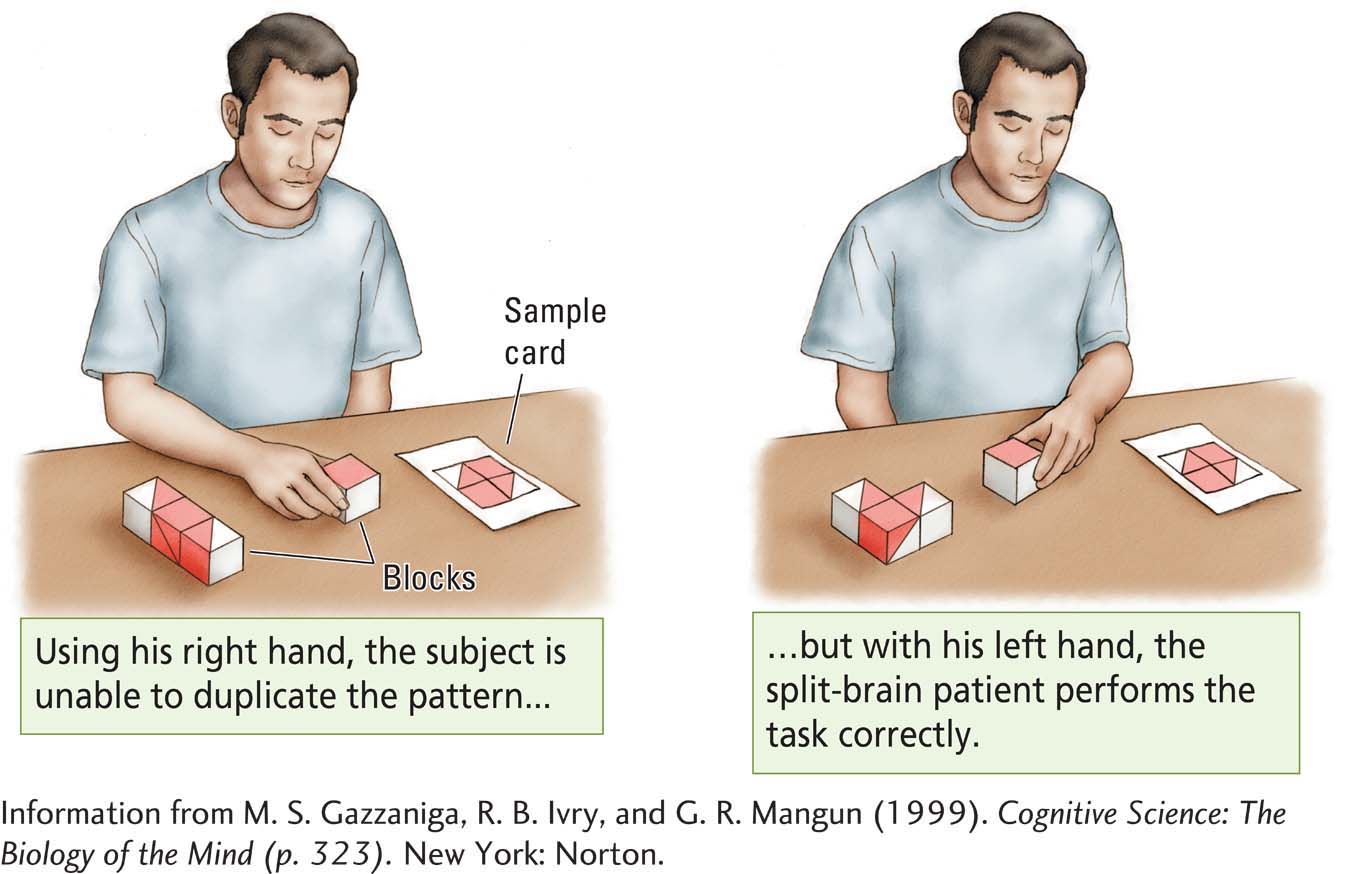Chapter Introduction
CHAPTER 15
How Does the Brain Think?
519
RESEARCH FOCUS 15-
15-1 THE NATURE OF THOUGHT
CHARACTERISTICS OF HUMAN THOUGHT
NEURAL UNIT OF THOUGHT
COMPARATIVE FOCUS 15-
EXPERIMENT 15-
15-2 COGNITION AND THE ASSOCIATION CORTEX
KNOWLEDGE ABOUT OBJECTS
MULTISENSORY INTEGRATION
SPATIAL COGNITION
ATTENTION
EXPERIMENT 15-
PLANNING
IMITATION AND UNDERSTANDING
RESEARCH FOCUS 15-
15-3 EXPANDING FRONTIERS OF COGNITIVE NEUROSCIENCE
CLINICAL FOCUS 15-
MAPPING THE BRAIN
COGNITION AND THE CEREBELLUM
SOCIAL NEUROSCIENCE
NEUROECONOMICS
15-4 CEREBRAL ASYMMETRY IN THINKING
ANATOMICAL ASYMMETRY
FUNCTIONAL ASYMMETRY IN NEUROLOGICAL PATIENTS
FUNCTIONAL ASYMMETRY IN THE HEALTHY BRAIN
FUNCTIONAL ASYMMETRY IN THE SPLIT BRAIN
EXPERIMENT 15-
EXPLAINING CEREBRAL ASYMMETRY
EXPERIMENT 15-
LEFT HEMISPHERE, LANGUAGE, AND THOUGHT
15-5 VARIATIONS IN COGNITIVE ORGANIZATION
SEX DIFFERENCES IN COGNITIVE ORGANIZATION
HANDEDNESS AND COGNITIVE ORGANIZATION
CLINICAL FOCUS 15-
SYNESTHESIA
CLINICAL FOCUS 15-
15-6 INTELLIGENCE
CONCEPT OF GENERAL INTELLIGENCE
MULTIPLE INTELLIGENCES
DIVERGENT AND CONVERGENT INTELLIGENCE
INTELLIGENCE, HEREDITY, EPIGENETICS, AND THE SYNAPSE
15-7 CONSCIOUSNESS
WHY ARE WE CONSCIOUS?
EXPERIMENT 15-
WHAT IS THE NEURAL BASIS OF CONSCIOUSNESS?

520
RESEARCH FOCUS 15-1
Split Brain
Epileptic seizures may begin in a restricted region of one brain hemisphere and spread through the fibers of the corpus callosum to the corresponding location in the opposite hemisphere. To prevent the spread of seizures that cannot be controlled through medication, neurosurgeons sometimes sever the 200 million nerve fibers of the corpus callosum.
The procedure is medically beneficial for many people with epilepsy, leaving them virtually seizure free, with only minimal effects on their everyday behavior. In special circumstances, however, the aftereffects of a severed corpus callosum become more readily apparent, as extensive psychological testing by Roger Sperry, Michael Gazzaniga, and their colleagues (Sperry, 1968; Gazzaniga, 1970) has demonstrated.
On close inspection, such split-
One split-
When the subject used his right hand to perform the task, he had great difficulty. His movements were slow and hesitant. In contrast, when he performed the task with his left hand, his solutions were not only accurate but also quick and decisive.
Findings from studies of other split-
Apparently, the right hemisphere, which controls the left hand, has visuospatial capabilities that the left hemisphere does not.

Studies of split-
Our first task is to define the mental processes we wish to study—
Next we explore the brain’s asymmetrical organization and delve deeper into split-